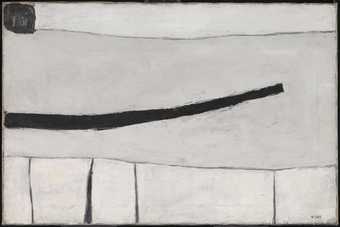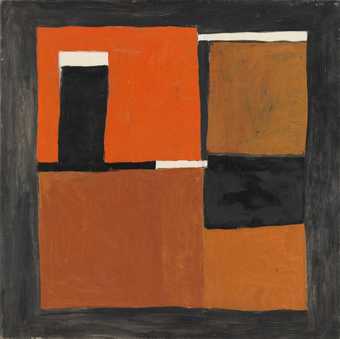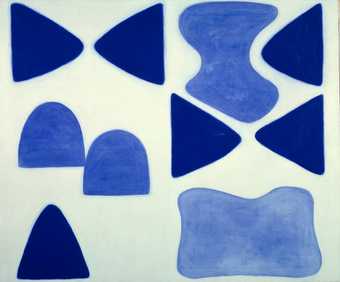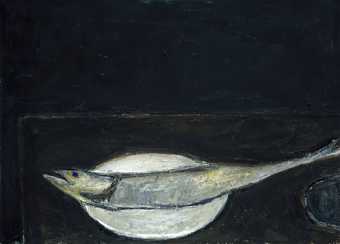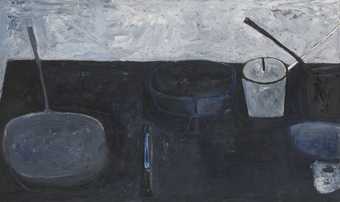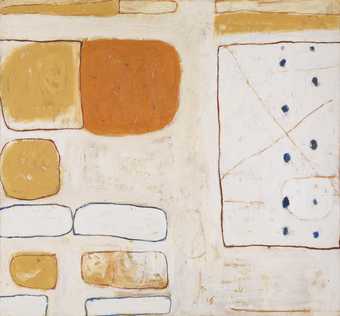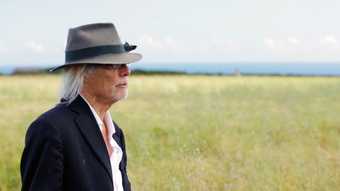Scott, he was one of those artists who had to respond to make a new form of modern painting in the wake of the war. He was one of the most eloquent and innovative of artists to respond to that challenge.
We're in the William Scott exhibition; this is a selection of some of Scott's most important work celebrating his centenary, born in 1913. He was one of that tight group with artists like Patrick Heron and Peter Lanyon who explored the new possibilities of the paint as an expressive device in itself. The first work maybe to highlight is this work made in Brittany before the Second World War. What's fascinating about this painting is I mean it's so clearly of its time of the 1930s. But there's so much in here that anticipates Scott's later work. The still life subject, the rather dominating phallic bottle in the foreground, the combination of the table top and the female figure. And even actually this intense blue we see reoccurring throughout the exhibitions in different ways.
William Scott had stayed before the Second World War, had spent some time in a little fishing village of Mousehole in Cornwall and he returned there shortly after the war and became a regular visitor. He also made a series of paintings, progressively more abstract, of the harbour at Mousehole and you can see in this painting from 1950 how he uses that motif of the two walls coming close together as a starting point to make this very austere in many ways, abstract painting.
You see this major departure in Scott's work around 1950, like many artists of his generation the years after the war were years of experiment and of uncertainty; no one quite knew how to take art forward. And it's around the beginning of the 50s that you see him beginning to develop a distinctive language in which austere abstract compositions offset by a very rich and sensual paint surface become his characteristic style. They are paintings which appear to be an empty space if you like, a space without people, and yet a human presence is frequently suggested.
This Ochre Still Life from 1958 is in a way an absolutely archetypal William Scott painting. He by this stage has established this limited vocabulary of forms that he uses based on cups, saucepans, chip frying baskets and here at the centre a pepper pot which becomes I think very unambiguously a phallic symbol. He says his pots and pans were his guitar, referring to Picasso's use of the guitar. But famously Picasso's guitar was a stand-in for the female figure, and I think in referencing Picasso's guitar Scott is acknowledging that these pans actually have a lot of metaphoric value as well as a formal value.
This painting is typical of works that William Scott started making in the late 60s and into the 70s. The scale is much bigger than his earlier work tended to be. But more significantly the surface has changed radically, and so you see the rich worked textured surfaces of the work of the paintings of the 1950s giving way to much thinner, almost veil-like areas of thin colour. William Scott was one of the first British artists to meet the American abstract expressionist when he visited New York and Long Island in 1953, and then in 1959 Mark Rothko stayed with the Scotts in Somerset. He was not, I think, the austere personality that one might assume from the paintings he made. He was not hold up in his studio making these very focused works about a very small number of objects. But I think if we look properly and closely at the paintings one shouldn't be surprised at that, that there is a rich humanity about the way that the paint itself is applied. They're not as austere as they might first appear.

